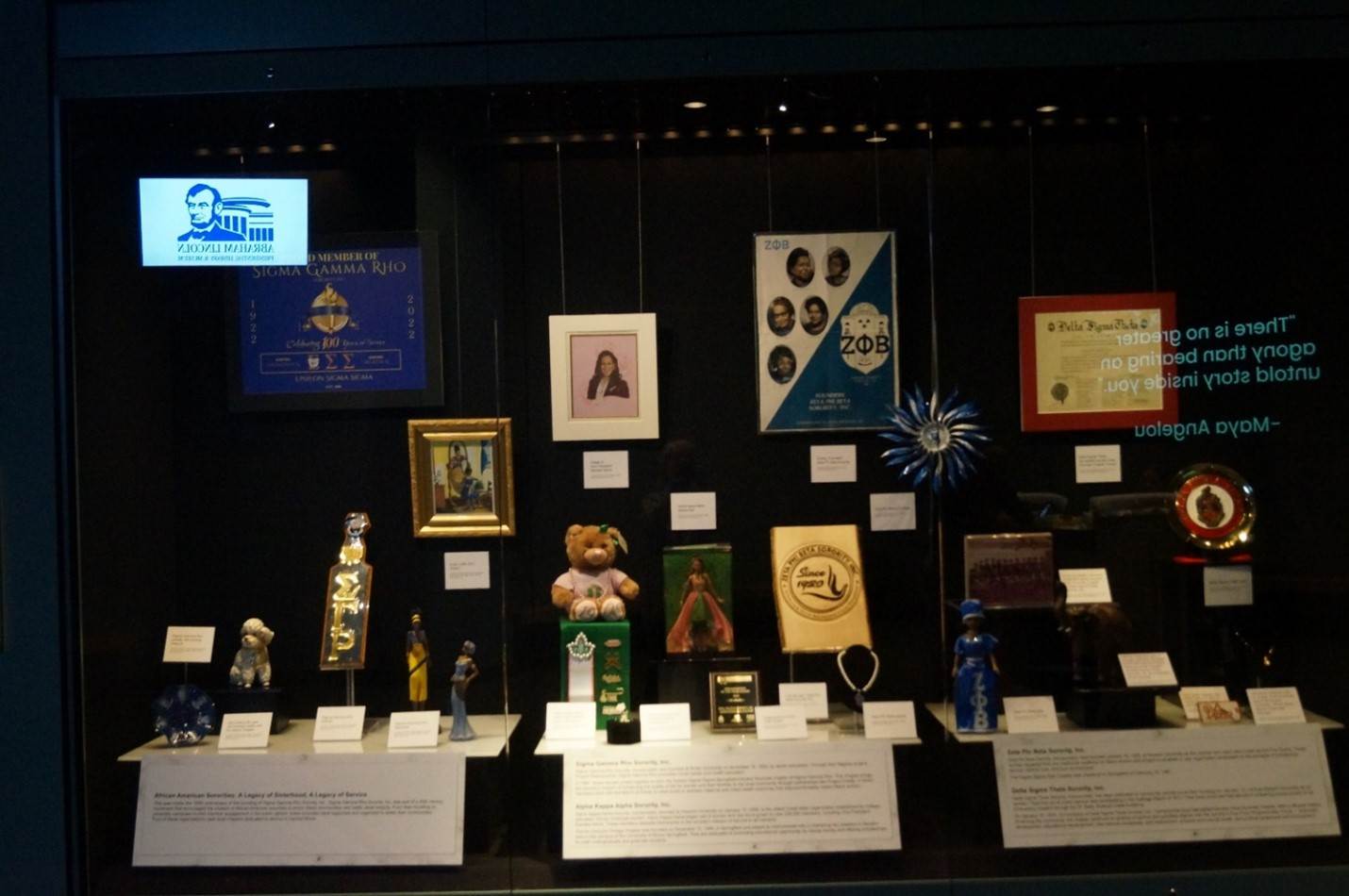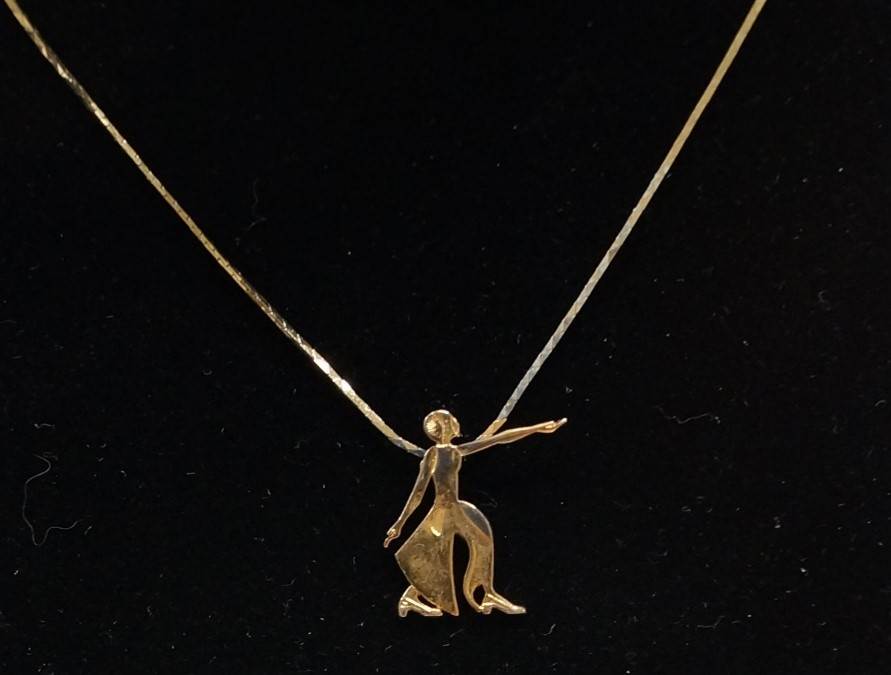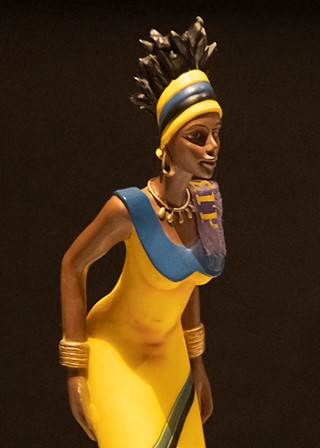 The ALPLM reserves the exhibit area near the entrance to our “Ghosts of the Library” show to tell Illinois community stories. We are currently featuring items loaned by central Illinois’s African American sororities.
The ALPLM reserves the exhibit area near the entrance to our “Ghosts of the Library” show to tell Illinois community stories. We are currently featuring items loaned by central Illinois’s African American sororities.
By Jacob K. Friefeld
The Washington, D. C., air was cool and the sky clear on March 3, 1913. It was the day before Woodrow Wilson’s inauguration, and thousands of people filled the streets — but not to welcome a new president. Instead, they had flocked to the nation’s capital to march for women’s suffrage.
The Washington Times described “Women and girls in dazzling, white flowing robes on horse and afoot [marshaling] the forces of equal rights.” The marchers were followed by “floats denoting the countries in which women have whole or partial suffrage. Before them was carried a banner labeled ‘Women of the World Unite.’”
Twenty-two young Black women from Howard University marched as founders of the Delta Sigma Theta Sorority, Inc. that day. They defiantly marched as living examples of W. E. B. Dubois’s prediction that the “Talented Tenth” of Black Americans would loudly assert themselves with “counter-cries” against oppression.
 This necklace was created in the form of the “Fortitude” sculpture on Howard University’s campus that was commissioned by Delta Sigma Theta Sorority, Inc. to honor its founders. (Courtesy of Delta Sigma Theta Sorority, Inc. Springfield-Decatur Area Alumnae Chapter)
This necklace was created in the form of the “Fortitude” sculpture on Howard University’s campus that was commissioned by Delta Sigma Theta Sorority, Inc. to honor its founders. (Courtesy of Delta Sigma Theta Sorority, Inc. Springfield-Decatur Area Alumnae Chapter)
Impressively, the sorority had only just entered its third month of existence when the Deltas marched. Chartered in January 1913, the founding Deltas hoped to create more than just a social organization. They wanted to forge a sorority that prepared members to lead and address the social issues of their time. In the 1913 suffrage march, Deltas put action behind these ideals that their sisters still hold today.
The Deltas were part of a larger Black sorority movement that rose during the early 1900s. Alpha Kappa Alpha, Inc. and Zeta Phi Beta, Inc. also emerged on Howard University’s campus, and Sigma Gamma Rho, Inc. followed at Butler. These sororities helped their members meet the challenges of a white supremacist society in the same period that Black fraternities and civil rights organizations like the NAACP sprang into existence. However, the Black sorority movement was distinct. These organizations did not focus only on civil rights—they worked to transform their members more holistically, and unlike Black fraternities, sorority members had to deal with the double discrimination of race and gender.
Sororities provided young Black women opportunities to lead in a society where such opportunities were rare. Vice President (and proud Alpha Kappa Alpha) Kamala Harris’s success is, in part, fruit from the tree Black women planted as they organized these sororities early in the last century.
 Sigma Gamma Rho figurine. (Courtesy of Epsilon Sigma Sigma Springfield-Decatur Alumnae Chapter, Sigma Gamma Rho, Inc.)
Sigma Gamma Rho figurine. (Courtesy of Epsilon Sigma Sigma Springfield-Decatur Alumnae Chapter, Sigma Gamma Rho, Inc.)
As they rose to prominence, these organizations spread throughout the U.S. They now have hundreds of thousands of members, and each has a chapter in central Illinois. The Abraham Lincoln Presidential Library and Museum is proud to partner with Springfield’s African American sororities to help tell their stories in our museum through objects loaned by local chapters. Sigma Gamma Rho, Inc. celebrated its 100th anniversary in November and Alpha Kappa Alpha, Inc., Delta Sigma Theta, Inc., and Zeta Phi Beta, Inc., celebrate their 115th, 110th, and 103rd anniversaries, respectively, in January.
Please join us in celebrating these sororities and their powerful legacies. The exhibit will be on display until April 2023.
 For more information on the Black sorority movement, see Paula Giddings’s In Search of Sisterhood: Delta Sigma Theta and the Challenge of the Black Sorority Movement (1988). It is an excellent source on which much of this post is based.
For more information on the Black sorority movement, see Paula Giddings’s In Search of Sisterhood: Delta Sigma Theta and the Challenge of the Black Sorority Movement (1988). It is an excellent source on which much of this post is based.
Friefeld is the ALPLM's midwest studies historian.